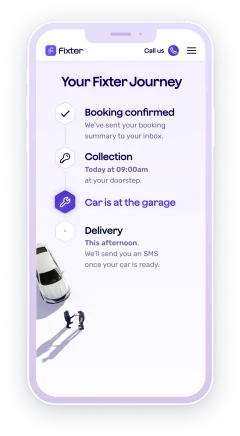How to Change an ABS Sensor: A Step-by-Step Guide for Beginners
Understanding the intricacies of car maintenance can seem daunting, especially when faced with the task of changing an ABS sensor. The Anti-lock Braking System (ABS) is a crucial safety feature, including the wheel speed sensor helping to maintain control during sudden stops by preventing the wheels from locking up. A faulty sensor can compromise this system, making it imperative for drivers to recognise the signs and know how to replace it effectively. In this guide, we will demystify the process for beginners, offering a step-by-step approach that ensures you can tackle this task with confidence and keep your vehicle in top-notch condition. Let’s delve into the essentials of maintaining your car’s safety features and learn how to change an ABS sensor like a pro.

Understanding ABS Sensors
Before diving into the replacement process, it's vital to comprehend the role of ABS sensors in your vehicle. The abs wheel speed sensor is integral to the functionality of the ABS, ensuring that your vehicle maintains traction and control during emergency braking scenarios. Understanding their importance and common issues can help you address potential problems more effectively.
Importance of ABS in Vehicles
The Anti-lock Braking System (ABS) is a safety feature found in most modern vehicles. Its primary function is to prevent the wheels from locking up during braking, which can cause skidding and a loss of control. ABS sensors monitor wheel speed and send data to the ABS control module. If a wheel is about to lock up, the system modulates braking pressure to maintain traction.
Why is ABS important? It reduces stopping distances on slippery surfaces, allowing drivers to maintain steering control. This technology is crucial in preventing accidents, particularly in adverse weather conditions.
Without functional ABS sensors, the system cannot perform optimally. Thus, understanding their role can help you recognise the symptoms of sensor failure, ensuring timely maintenance and safety on the road.
Common Issues with ABS Sensors
ABS sensors are prone to various issues that can compromise their operation. Common problems include a bad abs sensor, sensor damage, wiring faults, and contamination from dirt or debris. These issues can trigger the ABS warning light on your dashboard.
Damaged sensors often result from physical impact or exposure to extreme environmental conditions. Wiring faults might occur due to pinched or corroded wires, disrupting the sensor's signal to the ABS module.
To ensure your vehicle's safety, regularly inspect ABS sensors for signs of wear and tear. Address the abs light and any other warning lights promptly, as ignoring them can lead to compromised braking performance and increased accident risk.
Preparing for the Change
Changing an ABS sensor requires preparation. This involves gathering the right tools and materials and ensuring that safety precautions are in place. Proper preparation for the wheel speed sensor replacement is key to executing the replacement efficiently and safely.
Tools and Materials Needed
Before starting the replacement process, it's essential to assemble the necessary tools and materials. This will make the task smoother and more efficient.
Socket set – Required to remove the wheel and sensor.
Jack and jack stands – To lift and secure the vehicle safely.
Screwdriver set – For unscrewing sensor brackets.
Replacement ABS sensor – Ensure it matches your vehicle's make and model.
Multimeter – Useful for diagnosing electrical issues.
Having these tools on hand will ensure you are well-prepared for the sensor change, reducing downtime and frustration.
Safety Precautions to Follow
Safety should be a top priority when working on your vehicle. Follow these precautions to ensure a safe working environment:
Always work on a flat, stable surface.
Use jack stands to secure the vehicle; never rely on a jack alone.
Wear appropriate safety gear, such as gloves and safety glasses.
Disconnect the vehicle's battery to prevent electrical hazards.
Keep a fire extinguisher nearby in case of emergencies.
Adhering to these precautions can prevent accidents and ensure a smooth replacement process.
Removing the Faulty ABS Sensor
Once preparations are complete, the next step is to remove the faulty ABS sensor. This involves locating the sensor in your vehicle and following a step-by-step removal process.
Locating the Sensor in Your Vehicle
The location of ABS sensors varies depending on the vehicle make and model. Generally, they are positioned near the wheels, either mounted on the wheel hub or integrated into the braking system.
Front-wheel sensors are typically located on the steering knuckle or wheel hub.
Rear-wheel sensors might be found on the rear axle or wheel hub assembly.
Consult your vehicle's service manual for exact locations. Identifying the correct sensor is crucial before proceeding with removal.
Step-by-Step Removal Process
Removing the ABS sensor involves several steps. Follow this guide to ensure a correct procedure:
Lift the vehicle using a jack and secure it with jack stands.
Remove the wheel corresponding to the faulty sensor.
Locate the sensor on the wheel hub or brake assembly.
Disconnect the sensor's electrical connector carefully.
Unscrew the sensor using the appropriate tool, taking care not to damage surrounding components.
Remove the sensor from its mount, noting its orientation for reinstallation.
Completing these steps will prepare you for installing the new sensor.
Installing the New ABS Sensor
With the old sensor removed, the next phase involves installing the new ABS sensor. This process requires careful preparation, including having a scan tool, and precise execution.
Preparing the New Sensor for Installation
Before installing the new sensor, ensure it is ready for the task:
Inspect the new sensor for any visible damage.
Verify compatibility with your vehicle's make and model.
Clean the sensor mount area to remove dirt or debris.
Compare the old and new sensors to ensure they match in size and design.
Proper preparation will facilitate a seamless installation and ensure the sensor functions correctly.
Detailed Installation Instructions
Install the new ABS sensor by following these detailed instructions:
Position the new sensor in the same orientation as the old one.
Secure the sensor by tightening the screws or bolts.
Reconnect the electrical connector, ensuring a firm connection.
Reinstall the wheel and lower the vehicle to the ground.
Check for any obstructions and ensure the sensor is not touching any moving parts.
Executing these steps correctly will ensure the new sensor operates effectively, maintaining the ABS's functionality.
Testing and Final Checks
After installing the new ABS sensor, it's important to test its functionality, using a torque wrench if necessary, and perform final checks to confirm everything works as expected.
Ensuring Proper Sensor Functionality
To ensure the sensor functions correctly, conduct these tests:
Start the vehicle and observe the ABS warning light on the dashboard. It should turn off after a few seconds.
Test drive the vehicle in a safe area to verify that the ABS engages during hard braking.
Listen for unusual noises or vibrations that may indicate improper installation.
These tests, including checking for any trouble code, will confirm the sensor's operation and the ABS system's reliability.
Troubleshooting Common Installation Errors
If issues arise during testing, consider these troubleshooting steps:
Recheck sensor connections for secure attachment.
Inspect wiring for any signs of damage or disconnection.
Ensure the sensor is correctly aligned and free from obstructions.
By following these steps, you can identify and resolve common installation errors, ensuring a successful sensor change and optimal ABS performance.
This might seem like a lot for a beginner. We applaud you if you're doing it yourself! If you need some help, Fixter is here to help. Get an instant quote for your ABS wheel speed sensor replacement and save up to 30% of main dealership prices! If you prefer to speak to someone on the phone call us on 0330 808 9527, and a member of our team will be happy to help.








